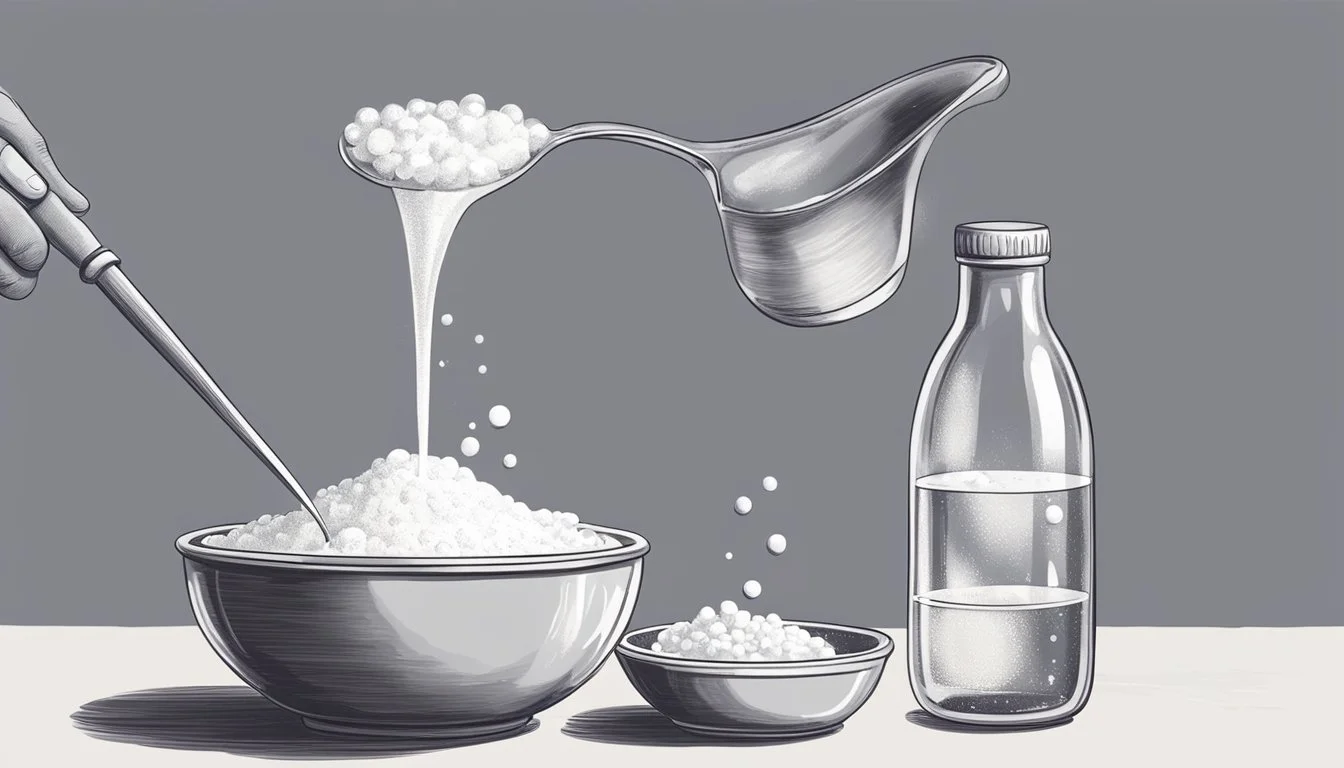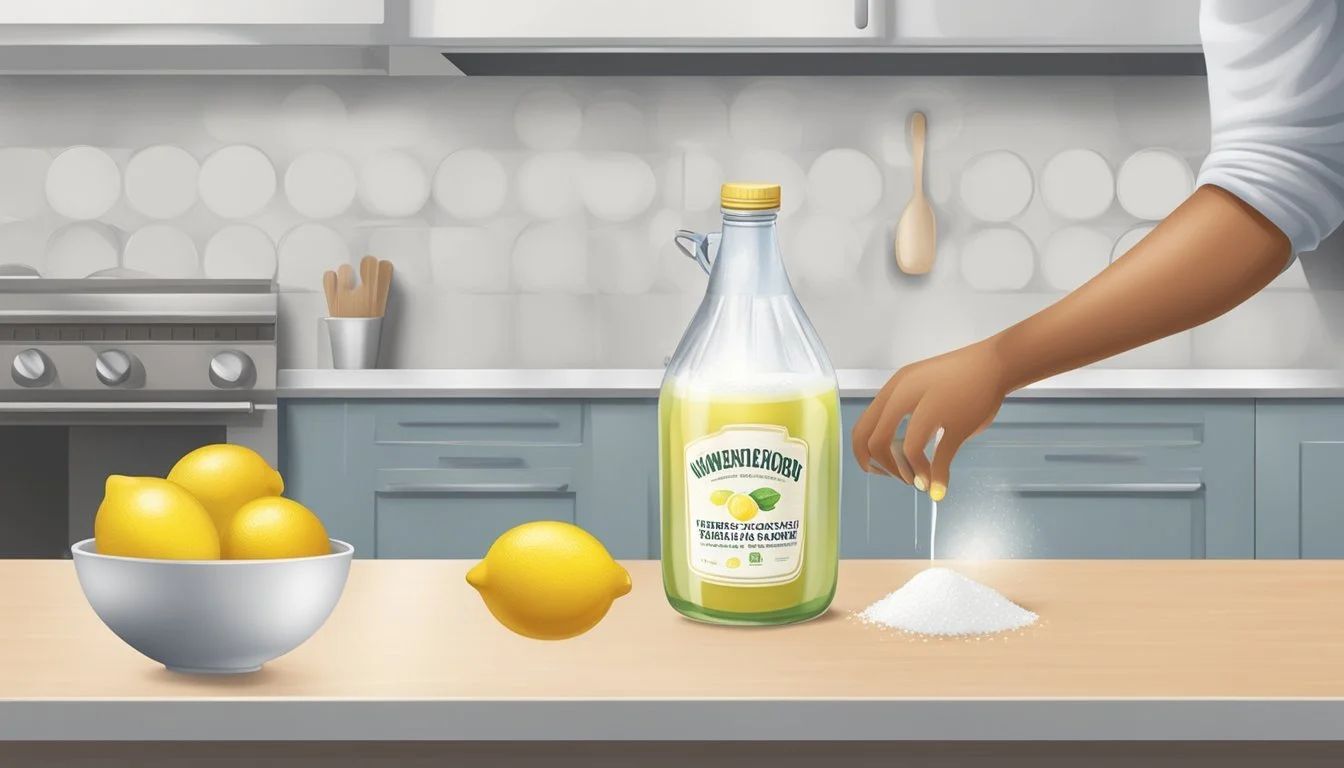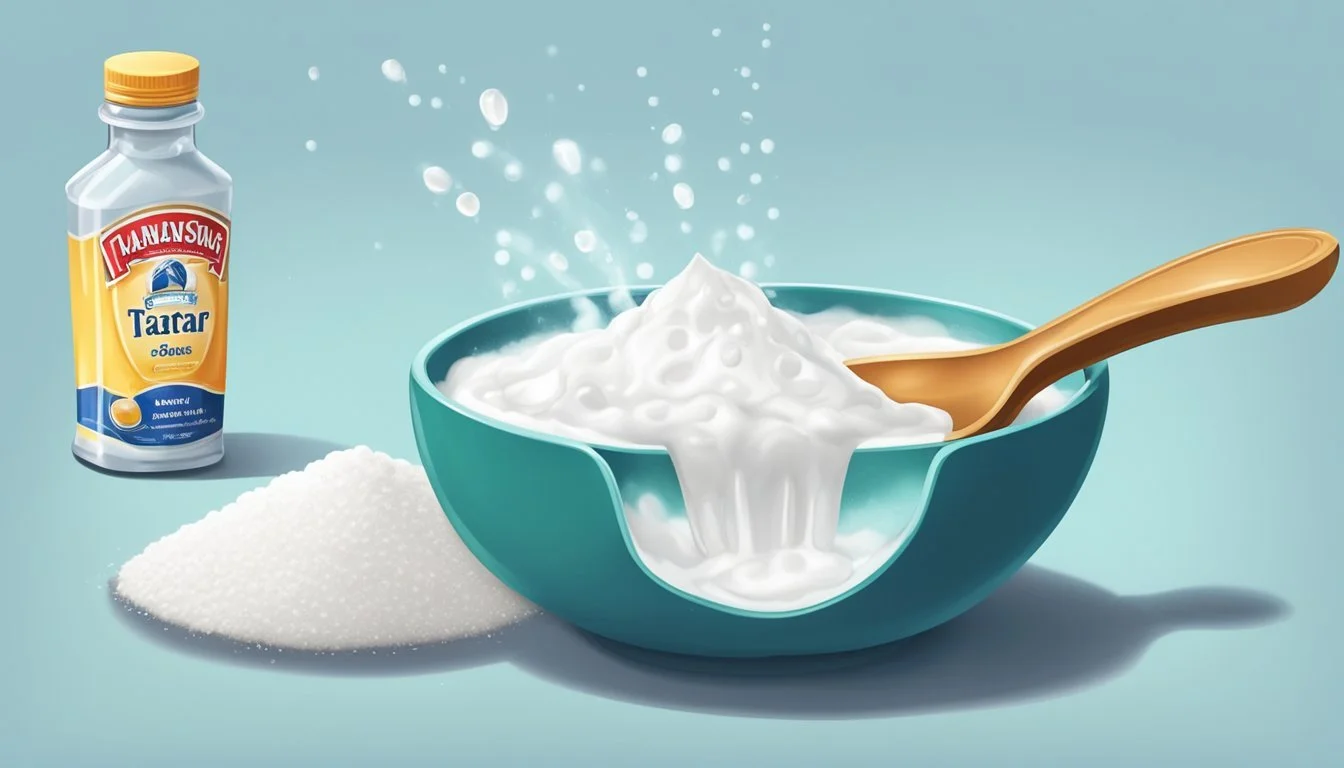How to Substitute Cream of Tartar
Simple Baking Solutions
Cream of tartar, a common ingredient found in baking, is a byproduct of winemaking called potassium bitartrate. It's known for its ability to stabilize egg whites and prevent sugar from crystallizing, making it a staple for recipes like meringues, soufflés, and certain types of cakes (how long do cakes last?). However, it's not uncommon to find oneself in the middle of a recipe only to discover that this crucial ingredient is missing from the pantry.
In such cases, cooks can turn to several alternatives that are likely already available in their kitchen. Baking powder, for instance, can be used to replace cream (how long does cream last?) of tartar, especially in baking recipes. For every teaspoon of cream of tartar required, one can use 1.5 teaspoons of baking powder. In recipes where cream of tartar is used to stabilize egg whites, lemon juice or white vinegar can serve as suitable substitutes, maintaining the structure and volume of the whipped egg whites.
Each alternative serves a specific purpose and may work differently depending on the recipe, but they provide practical solutions that help maintain the desired outcome of the dish. These substitutes are beneficial not just for their accessibility, but also for preserving the quality and taste of the finished product when cream of tartar is not on hand.
Understanding Cream of Tartar
Cream of tartar is a versatile ingredient known for its role as a leavening agent and stabilizer in cooking and baking due to its acidic properties.
Chemical Composition
Cream of tartar is chemically known as potassium bitartrate or potassium hydrogen tartrate. It's a white, odorless powder that forms naturally during the winemaking process as tartaric acid crystallizes in wine barrels. The crystalline acid is then purified to produce the cream of tartar used in culinary applications.
Role in Baking
In baking, cream of tartar works as a leavening agent when combined with baking soda. The reaction between the cream of tartar (acid) and baking soda (base) releases carbon dioxide gas, which causes doughs and batters to rise. Additionally, its acidic properties help to stabilize whipped egg whites, increasing their heat tolerance and volume, which is essential in recipes like meringues and soufflés.
Common Uses
Beyond leavening and stabilizing, cream of tartar serves several uses in cooking:
Preventing Sugar Crystallization: It interferes with the crystallization of sugar, beneficial in making smooth icings, syrups, and candies.
Enhancing Whipped Cream: A small amount added to cream before whipping can help stabilize it.
Cleaning Agent: Due to its acidic nature, cream of tartar is a component of some eco-friendly cleaning solutions.
These functionalities illustrate the ingredient's multipurpose nature in both culinary and household contexts.
Identifying Substitutes
When looking for a substitute for cream of tartar, it's crucial to consider the role it plays in the recipe, whether as a stabilizing agent or to activate baking soda. The following substitutes can be used depending on the specific application or if a non-acidic alternative is needed.
Substitutes for Specific Applications
Baking
Baking Powder: For recipes that require both cream of tartar and baking soda, baking powder can serve as a complete replacement. Baking powder contains both an acid and a base and usually has a neutral taste.
Ratio: Use 1.5 teaspoons of baking powder for every 1 teaspoon of cream of tartar.
Stabilizing Egg Whites
Acidic Liquids: Acid is vital for stabilizing egg whites, and lemon juice or white vinegar can be used as a direct replacement for cream of tartar when making meringue or soufflés.
Ratio: Replace cream of tartar with an equal amount of lemon juice or white vinegar.
Buttermilk and Yogurt
As both buttermilk and yogurt have acidity, they can be used in baking recipes requiring cream of tartar.
Ratio for Buttermilk: Substitute 1/4 teaspoon of cream of tartar with 1/2 cup buttermilk, and reduce the liquid in the recipe by 1/2 cup.
Ratio for Yogurt: Use the same amount of yogurt as buttermilk, thinning it if necessary to match buttermilk's consistency.
Non-Acidic Alternatives
In scenarios where an acidic flavor is undesirable or unnecessary, non-acidic alternatives to cream of tartar can be employed:
Baking Soda: If the recipe contains enough acidic components, omitting cream of tartar and only using baking soda might suffice. However, this should only be attempted if there are other acidic ingredients to activate the baking soda.
Choosing the appropriate substitute involves understanding the original function of cream of tartar in a recipe and matching it with a suitable replacement that can perform similarly in terms of acidity and chemical reaction.
Cooking with Substitutes
When cooking, it's crucial to understand how substitutes can affect a recipe's flavor and texture, particularly in baking where precision is key. Here are specific ways to adjust recipes and optimize the flavors and textures of baked goods using common substitutes.
Adjusting Recipes
When a recipe calls for cream of tartar, bakers might need to replace it due to availability issues. Cream of tartar, or potassium hydrogen tartrate, is often used in baking to stabilize egg whites and prevent sugar from crystallizing. However, there are several effective substitutes bakers can enlist to ensure their baked goods still turn out correctly:
Baking Powder: If the recipe includes baking soda, one can replace cream of tartar with double the amount of baking powder. Baking powder is a combination of baking soda and an acid, typically cream of tartar or a similar acid salt.
Lemon Juice or White Vinegar: For each teaspoon of cream of tartar, use an equal amount of lemon juice or white vinegar. These are particularly effective in recipes requiring the stabilization of egg whites to maintain a fluffy texture, such as in meringues or soufflés.
Yogurt: When replacing cream of tartar in baking recipes, like cakes or cookies, one can use an equal amount of yogurt by volume, but they must also reduce the recipe's liquid content to maintain the balance.
It's important for bakers to consider the additional moisture content when using yogurt or buttermilk and reduce other liquids in the recipe accordingly to maintain the dough or batter's consistency.
Optimizing Flavors and Textures
Finding the right balance in baked goods, such as cakes and cookies, requires attention to both flavor and texture:
Acidic Liquids: Lemon juice not only replicates the acidity you need to interact with baking soda, but it can also add a subtle zesty flavor which might be desirable in some recipes.
Dairy Products: Substitutes like yogurt and buttermilk can tenderize the gluten in flour, resulting in a softer texture for cakes and bread. They also contribute to the rise and can impart a slight tang to the final baked good.
For the perfect pie crusts or tender cookies, the key is to maintain the right level of acidity and moisture. Substitutions may alter the outcome slightly, but knowing these pairings will help bakers achieve the desired results, even in the absence of cream of tartar. Alterations in recipes need to be done judiciously to preserve the integrity of the baked item, ensuring that substitutes enhance rather than detract from the final product.
Baking without Cream of Tartar
In baking, cream of tartar serves as a leavening agent and stabilizer for egg whites, but various alternatives can fulfill similar roles. This section outlines methods to alter baking processes and utilize alternative leavening techniques when cream of tartar is unavailable.
Modifying Baking Processes
When cream of tartar is used for stabilizing egg whites in recipes like meringue, one can opt for lemon juice or white vinegar. Use 1 teaspoon of either lemon juice or white vinegar to replace 1/2 teaspoon of cream of tartar to stabilize whipped egg whites effectively. This substitution is crucial for maintaining the structure and stability of meringues and other whipped egg white concoctions.
For batters and doughs requiring leavening properties without cream of tartar, adjusting existing ingredients can work. Baking powder, which contains both sodium bicarbonate and cream of tartar, can be employed directly. Substitute 1.5 teaspoons of baking powder for every 1 teaspoon of cream of tartar required in the recipe to ensure the correct rise.
Alternative Leavening Methods
In situations where one must omit cream of tartar from recipes needing a leavening effect, alternative acidic components can activate baking soda. Here is a brief list of suitable substitutes:
Buttermilk: Replace every teaspoon of cream of tartar with an equal amount of buttermilk to activate the baking soda.
Yogurt: Utilize an equal quantity of yogurt in place of cream of tartar for the same purpose.
These substitutions encourage leavening by interacting with baking soda, creating the necessary gas to produce a rise in doughs and batters. They are particularly useful in cakes, pancakes, and other baked goods where a light and airy texture is desired.
Special Considerations for Substitutions
When substituting cream of tartar, it's crucial to understand the role it plays in recipes and how alternatives can affect both the outcome and nutritional content of the food.
Food Science Insights
Cream of tartar is a byproduct of wine production and derives from tartaric acid, making it highly acidic. This acidity is essential in baking as it prevents sugar crystals from forming in desserts like frosting or candy, thereby ensuring a smooth consistency. In meringue or angel food cakes, cream of tartar stabilizes the bubbles in beaten egg whites, preventing protein collapse and fostering a stable, airy structure.
When choosing a substitute, one must consider the chemical reaction that cream of tartar typically engages in. For instance, baking powder contains cream of tartar and sodium bicarbonate and can serve as a substitute, but it alters the sodium content of the dish. The substitute ratio is:
1.5 teaspoons of baking powder for every 1 teaspoon of cream of tartar
Nutritional Comparisons
From a nutritional standpoint, cream of tartar offers trace amounts of potassium but has little impact calorically. Substitutes like yogurt or buttermilk can introduce protein and fat into the recipe, and adjustments may be needed to balance the additional calories and changes in moisture content. The substitution of vinegar or lemon juice is often calorically neutral but can affect the final taste due to their distinct flavors. A nutritional comparison of common substitutes (in relation to a 1/4 teaspoon of cream of tartar) is as follows:
Substitutes Quantity to Replace 1/4 tsp of Cream of Tartar Potassium Sodium Calories Fat Baking Powder 1.5 tsp Low Higher Low 0 Vinegar (White) 1 tsp None None Low 0 Lemon Juice 1 tsp Low None Low 0 Yogurt Reduce other liquids by 1/2 cup Moderate Low Moderate Varies Buttermilk Replace 1/2 cup liquid Moderate Low Low Low
Substitutions involving sodium-rich components like baking powder should be carefully measured to avoid adding excess salt to the dish. It's also important to note that while yogurt and buttermilk can make suitable replacements, their lactic acid content works differently than cream of tartar's tartaric acid, potentially altering the final texture and taste.
Additional Uses Outside of Baking
Outside of baking, cream of tartar still plays a role in both household tasks and food preservation, offering its acidic properties to various uses.
Household and Culinary Alternatives
Stabilizing Frostings and Icings: In the culinary world, cream of tartar is often used to stabilize frostings and icings. A small pinch can prevent sugars from crystallizing, providing smoother textures.
Syrup Improvement: For syrups, including sugar syrups and simple syrup, cream of tartar can enhance thickness and prevent crystallization, thus maintaining a consistent viscosity optimal for culinary applications.
Applications in Food Preservation
Preventing Sugar Crystallization in Candy: Cream of tartar is a key ingredient in making candies, like snickerdoodles, to inhibit crystallization of sugar, which ensures the candy has the proper texture.
Wine Clarification: It aids in the clarification process of wine by helping to precipitate out proteins that can make wine hazy.
DIY Cream of Tartar Substitutes
When a recipe calls for cream of tartar and it's unavailable, several kitchen staples can serve as suitable alternatives, keeping the desired consistency and chemical reactions in mind.
Homemade Mixes for Specific Results
Baking Soda and Acid Combination: For recipes requiring both cream of tartar and baking soda, one can replace them with baking powder. Use this mix particularly when stability in cakes and cookies is desired.
Angel Food Cake: Instead of cream of tartar, one can opt for lemon juice to stabilize egg whites. This ensures the cake maintains its fluffy texture.
Lemon Meringue Pie: Similarly, lemon juice can act as a stabilizing agent for the egg whites, thus preserving the pie's structural integrity.
Table for Substituting in Recipes:
For 1 tsp of Cream of Tartar Substitute with In baking 1.5 tsp of baking powder In stabilizing egg whites Equal amount of lemon juice or white vinegar
Natural and Organic Options
Lemon Juice: When the recipe involves beating egg whites, such as in meringue or soufflés, lemon juice provides the necessary acidity for stability.
Vinegar: Like lemon juice, white vinegar offers the acidic quality that mimics cream of tartar, especially in recipes where a neutral taste is preferred.
Guideline for Use:
Replacement for Stabilizing: Use an equal amount of lemon juice or vinegar to replace cream of tartar for each teaspoon needed.
Replacement in Baking: Substitute cream of tartar with half the required amount using vinegar when dealing with batters and doughs, adjusting for taste and consistency.
Note: Always adjust liquid ingredients accordingly when using these substitutes to maintain the desired consistency of the dish.
Frequently Asked Questions
When working with cream of tartar, users often have queries regarding its longevity and the potential allergic reactions it may cause. This section aims to address those concerns with clarity and precision.
Storage and Shelf Life
Cream of tartar, a pantry staple, should be stored in a cool, dry place inside a tightly sealed container. It is known for its stability and long shelf life, maintaining its potency for years. This enduring quality makes it a reliable ingredient for both occasional and frequent bakers. However, if stored improperly, one might notice a decline in effectiveness, so proper storage is key to preservation.
Safety and Allergies
Despite its common usage, cream of tartar can cause allergic reactions in some individuals, although such cases are rare and not typically severe. If an allergy is suspected, it is advisable to seek out peer-reviewed studies or consult a healthcare provider for confirmation. It's important to note that the editorial process of culinary advice does not usually involve the rigorous testing for allergies seen in scientific research. Therefore, users should exercise caution and be aware of their personal sensitivities when utilizing this ingredient.
The Role of Equipment
In the pursuit of culinary precision, understanding how different materials and tools interact with ingredients is crucial, especially when substituting components like cream of tartar.
Material Properties and Reactions
Copper bowls are ideal for when a recipe calls for whipping egg whites, which is a common scenario where cream of tartar is used. Copper interacts with egg whites, reducing the risk of over-whipping by fostering stronger bonds between proteins. This results in egg whites that are more stable and less likely to collapse, which can mimic the effects of cream of tartar's stabilization property.
Stainless steel is another popular choice for kitchen equipment. While it may not offer the same reaction benefits as copper, it is non-reactive and does not interfere with the release of carbon dioxide gas during baking, which is essential for achieving the correct leavening effect when cream of tartar is substituted with other acids like distilled vinegar or lemon juice in recipes.
Choosing the Right Tools for Baking
The proper selection of baking tools can influence the success of substituting cream of tartar. For instance, when vinegar is used as a substitute, one should avoid using reactive bowls that could alter the taste or color of the batter.
Here's what bakers should consider when preparing substitutions:
Reactiveness: Choose non-reactive bowls like stainless steel when working with acidic substitutes to prevent any unwanted chemical reactions.
Stability: For recipes where cream of tartar is used in stabilizing egg whites, consider a copper bowl if available, as it can help maintain the desired texture even without cream of tartar.
Accuracy: Ensure precise measurements when substituting, as the balance between acidity and alkalinity is key to the success of baked goods.




